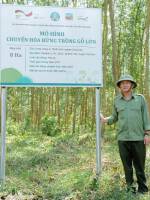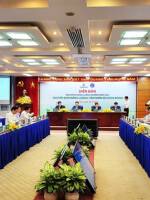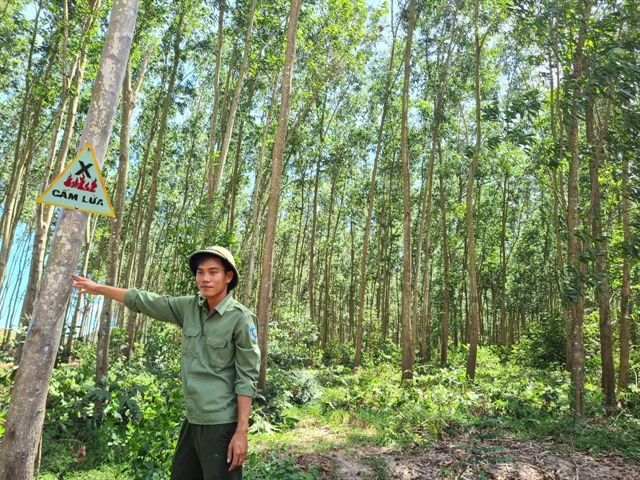
In the misty hills of Bình Hiệp Commune, Gia Lai Province, 55-year-old Nguyễn Thị Loan remembers how different her life used to be.
“Before, we only planted medicinal herbs and low-quality acacia trees,” she said.
“They sold for so little, we could barely make ends meet. Life was hard, not just for my family, but for many others in our commune.”
That changed when she began working for the local forestry company under a new initiative that’s quietly transforming forest management across the central region.
Loan now earns VNĐ300,000-400,000 (US$11.4-15.3) each day tending forest land. But more than income, she said the experience has empowered her to apply what she’s learned to her family’s 3ha of forestland she has now converted to grow large timber trees.
Loan is one of more than 700 household participants in the ‘Scaling up sustainable forest management and certification in Việt Nam’ (SFM) project, funded by the German Government.
Launched in 2022 and set to run through 2025, the project is being implemented across six State-owned forestry enterprises and forest protection management boards in three provinces of Bình Định (now part of Gia Lai), Quảng Trị and Phú Yên (now part of Đắk Lắk).
It aims to reshape Việt Nam’s forestry sector by moving away from short-term plantation cycles that prioritise wood chips and pulp, and instead promote long-cycle, high-quality timber forests that generate more income, protect biodiversity, and contribute to the country’s climate goals.
The project’s early results are promising. Many families, once reliant on low-value crops and unstable forest-related work, now have a steady income and the skills to manage land sustainably.
In Gia Lai alone, forestry companies such as Quy Nhơn Forestry Co., Ltd. and Sông Kôn Forestry Co., Ltd. have received technical and financial support to pilot long-cycle forest models and train local workers in modern silvicultural practices.
Perhaps most importantly, the project has introduced a new model of cooperation between forestry companies and communities. Instead of traditional labour contracts, households now sign legal agreements that clarify both sides’ responsibilities and enable direct participation in decision-making.
High-tech approach
One of the most striking transformations has come through technology. Forestry companies are now using unmanned aerial vehicles (UAVs), drones equipped with multispectral cameras, to monitor forests with unprecedented speed and precision.
What used to require four workers trekking through rugged terrain for a week, can now be done in two days by just two people, covering more than 11 times the area. The drones collect highly accurate data, cut logistics costs and significantly improve the detection of illegal logging or environmental changes.
“This technology has completely changed how we manage forests,” said a manager at Quy Nhơn Forestry Co., Ltd.. “We no longer rely on manual inspections or incomplete data. Now we have real-time insights and better protection for our forest assets.”
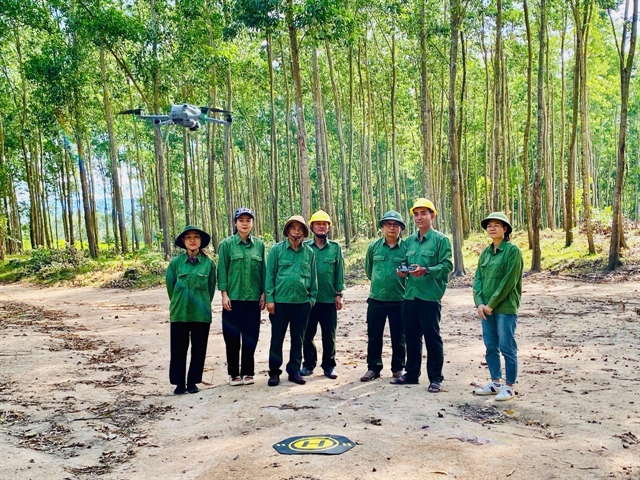
According to the forestry project management board, Việt Nam’s forests cover just over 42 per cent of the national land area, but many remain degraded or lack ecological diversity.
Although Việt Nam is Southeast Asia’s largest exporter of wood products, much of the timber comes from short-cycle plantations producing wood chips, an increasingly unsustainable economic model.
Currently, half of Việt Nam’s log imports are large-diameter timber, which domestic production struggles to supply. The SFM project aims to help bridge that gap by shifting production to high-quality saw timber from sustainably managed, long-rotation forests.
“This is not just about economic returns,” said Nguyễn Danh Đàn, deputy director of the central SFM project management board.
“It’s about transforming how we view and value our forests, as long-term assets that support livelihoods, biodiversity and climate stability.”
The project also aligns with the country’s climate commitments. By extending forest cycles and focusing on large timber, forests can act as natural carbon sinks, contributing to the country’s pledge to reach net-zero emissions by 2050.
Nguyễn Văn Hoan, deputy director of the Department of Agriculture and Environment in Gia Lai Province, commended the project’s early achievements, noting that even in its initial stages, it has shown promising results. He emphasised that Gia Lai, with its rich forest resources, is emerging as one of the country’s key timber export hubs.
According to Hoan, the shift toward developing large timber forests and implementing sustainable forest management aligns well with the province’s long-term forestry strategy.
In the context of globalisation and the green transition, integrating forest development with carbon credit markets presents a major opportunity for both the province and local communities to participate more deeply in forest-based value chains.
“Beyond its economic benefits, the project’s large timber forest models are expected to generate clear gains for biodiversity, enhance local livelihoods, and support climate change adaptation,” Hoan said.
“These models will serve as a foundation for broader expansion and nationwide adoption in the coming years.”
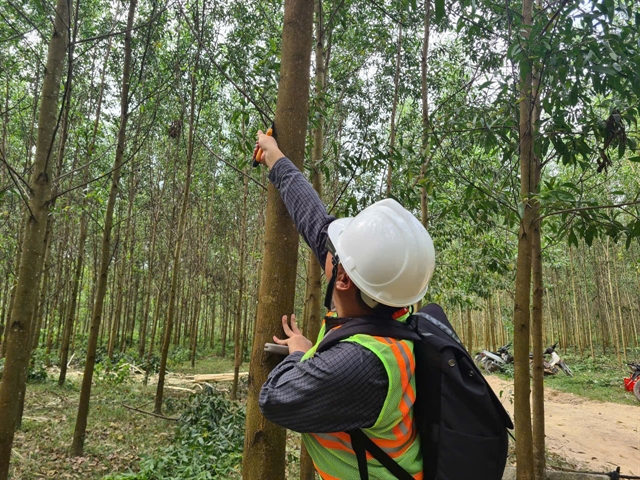
A model for the nation
In Sông Kôn Forestry Co., Ltd., the shift is already underway. The company has adopted advanced silviculture techniques such as early thinning and pruning, while also experimenting with intercropping slow-growing native hardwoods, like Lim xanh (Erythrophleum fordii oliver), with fast-growing acacia trees.
This integrated forestry model aims to generate income at different stages of forest growth while improving biodiversity, resilience, and long-term value. With over 1,280ha of certified sustainable forests, including 740ha of large timber plantations, Sông Kôn is positioning itself as a leader in this forestry transition.
“Moving to large timber is a strategic shift,” said company director Nguyễn Văn Hể.
“It not only improves long-term economic value, but also supports the national sustainability goals. Thanks to the SFM project, we’ve been able to build the technical and operational capacity to make this change.”
The project also emphasises social inclusion and gender equality. Households, communities, and forest company staff have been trained to integrate gender considerations into forest planning, ensuring that both men and women benefit from new opportunities.
In Gia Lai, provincial leaders say the timing couldn’t be better.
“We have a wealth of forest resources and are one of the country’s top timber exporters,” Hoan added.
“This shift to sustainable, high-value forestry is the right direction, especially as we enter a green economy where forest carbon credits are increasingly important.”
Trần Tố Như (VNS)


